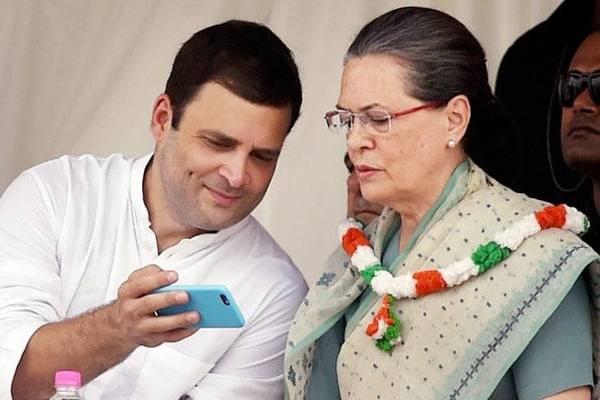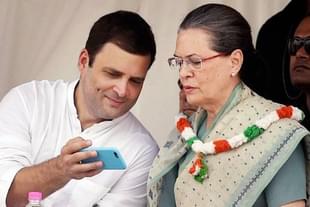Politics
Will We See A ‘Maha Cut-Bandhan’ in 2019?
Sagar Suri
Jun 07, 2018, 12:55 PM | Updated 12:55 PM IST
Save & read from anywhere!
Bookmark stories for easy access on any device or the Swarajya app.


Morarji Desai (prime minister of India for 2 years 126 days), Charan Singh (prime minister of India for 170 days), VP Singh (prime minister of India for 343 days), Chandra Shekhar (prime minister of India for 223 days), HD Deve Gowda (prime minister of India for 324 days) and Inder Kumar Gujral (prime minister of India for 332 days) had one thing in common: their governments were marred by internal ideological differences and personal ambitions of the leaders, which inter-alia, was also the major factor responsible for the fall of these regimes.
Whether it was Indira Gandhi, Atal Bihari Vajpayee, Rajiv Gandhi, Dr Manmohan Singh and presently Prime Minister Narendra Modi, they all galvanized their party cadres, had clarity and vision during their respective election campaigns and were accepted leaders of their legislative organisations, once they assumed office. One may agree or disagree on merits with their respective policies and decisions, but the fact that they completed their tenures successfully, point towards the fact that in their own way, they contributed to the development and betterment of the nation.
Recently, after the assembly poll results in Karnataka and by-poll results of Gorakhpur, Phoolpur and now Kairana, a political strategy called “United Opposition-versus-Narendra Modi (BJP-led NDA)” has been gaining impetus. Some sections of the media and political pundits have already given their verdict that BJP’s strategy has failed and their chances of returning to office in 2019 are slim. To all such sections and pundits, I would like to put forth the view that the jury is still out on such schema. In my humble opinion, there are innumerable challenges the “United Opposition” is likely to face when it contests as a homogenous mass in the 2019 Lok Sabha elections, some of which are as follows:
1. Leaderless ‘United Opposition’ or too many leaders at the same time - The main issue that stares in the face of the ‘United’ Opposition is the fact that prior to the 2019 polls, when the NDA would have a leader in Narendra Modi, the ‘United’ Opposition would be either leaderless prior to polls or would have too many leaders staking their claim to the top post after the election results. From what is understood, the internal understanding of the ‘United’ Opposition is that the party with most number of seats would get the post of Prime Minister. However, in parliamentary democracy, it would come down to number games and for each party, keeping its flock together would be a huge challenge. Historically, such united fronts or coalitions haven’t even lasted a full term.
2. Ideological differences – The coming together of Samajwadi Party, Bahujan Samaj Party, Rashtriya Lok Dal, Communist Party of India-Marxist and Trinamool Congress smacks of political convenience and poverty of ideas and principles. While they may befriend each other for the time being such friendship would is not likely to last long and the writing is already on the wall if one observes the recent developments in Karnataka regarding cabinet formation.
The Janata Party government under Morarji Desai which came to power with the slogan 'democracy or dictatorship', could not continue for long, due to the internal differences and personal ambitions of the leaders. The Janata Party got split into various groups, like the Janata Dal, BJP, and later the Samajwadi Party, etc. Similarly, the reason for the fall of Morarji Desai’s government were the inherent ideological contradictions. It should also be remembered that these parties in the ‘United Opposition’ are not new parties who can mould and present their changed or modified ideology or vision to the general public. Their ideology and agendas are known to the general public and they all have a strong electorate base by virtue of their ideology and agenda in their respective regions.
3. Seat sharing and candidate selection - Even though, this may seem to be an issue of mere semantics rather than of principle, it is a crucial hurdle which the ‘United Opposition’ would have to cross in order to pose a threat to the BJP-led NDA. Every party of the ‘United Opposition’ throwing their weight behind a single party’s candidate for a by-poll is much easier as compared to sharing of 543 seats amongst each other so as to avoid division of votes. Up till now, none of the ‘United Opposition’ parties have displayed prudent seat sharing in big assembly sections, (except for in Bihar in 2015) therefore, such experiment for 2019 Lok Sabha polls may also prove to be a game spoiler for the ‘United Opposition’.
4. Sole agenda of removing BJP-led NDA from office may not be a sufficient reason - Presently, all the parties of ‘United Opposition’ are singing in chorus, that the only glue which is keeping them together is that, they want to restrict the BJP-led NDA from coming back to power in 2019. In times, where development and financial inclusion are expected to be on national agenda, such a negative agenda of restricting a particular combination from coming back to power may not secure the ‘United Opposition’ its desired results.
5. Faithful allies or opportunists in-waiting - Since there is unlikely to be any pre-poll vision or a Common Minimum Programme by the ‘United’ Opposition in 2019, with absolute emphasis being only on garnering the maximum numbers, it would not be incorrect to postulate the distinct possibility of high-octane, post-poll transactional behaviour. More importantly, this would apply to parties that have allied or worked with the BJP-led NDA in the past, at both, the national level and/or state level.
6. Narendra Modi vs. Who?- Up till now, the NDA has made it clear that the 2019 Lok Sabha elections will be fought under the stewardship of Prime Minister Narendra Modi, but there is no such clarity or consensus forthcoming from the ‘United’ Opposition. They have strong regional leaders whose writs run only within their respective fiefdoms. They have regional leaders with high stature but none of them has a PAN-India acceptance or popularity. The personal ambitions of various leaders of the ‘United Opposition’ are already making headlines, which only adds to the difficulties for the ‘United Opposition’ in zeroing down on a particular potential Prime Ministerial Candidate, if any.
In conclusion, keeping politics aside, as an Indian citizen, I hope that the 2019 Lok Sabha results will not promote politics of opportunism and, instead, present the nation with a clear mandate, which is a sine qua non for growth and progress. The BJP-led NDA has already started strengthening its ties with allies/potential allies for the 2019 Lok Sabha elections (the only exception being TDP) and if the national surveys and media reports are to be believed, PM Narendra Modi is set to return in 2019. The ‘United Opposition’ is an awkward and desperate combination with inherent contradictions. On a demurrer, even if the ‘United Opposition’ musters the numbers and comes to power, it would add to the list of governments marred by inherent contradictions, and in all likelihood have the same fate such as the ones led by Morarji Desai, Charan Singh, VP Singh, Chandra Shekhar, HD Deve Gowda and Inder Kumar Gujral.
Sagar Suri is a practising advocate in the Supreme Court of India and Delhi High Court. He is a member of the Bharatiya Janata Party-Delhi. He can be reached at sagarsuribjp@gmail.com.




